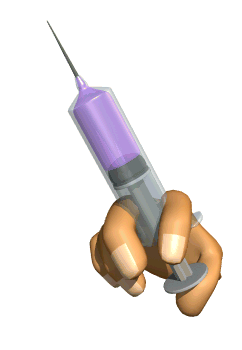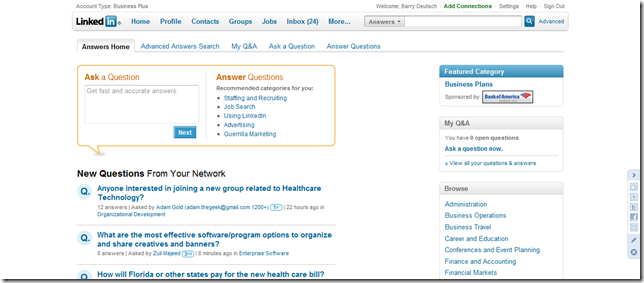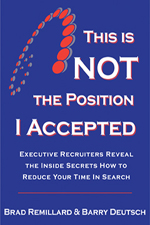So much has been written on the importance of a complete and compelling LinkedIn profile. I am currently working on two searches for which I am extensively using LinkedIn to source candidates. From what I have seen, one would think that LinkedIn is either a new or non-essential tool. Nothing could be further from the truth.
In the last two weeks, I have looked at well over three hundred profiles on LinkedIn. Only one thought comes to mind and I hope I speak for most recruiters (internal and external) when I say, “What a major disappointment!” or “Now I understand exactly why so many candidates are in transition so much longer than necessary.”
I firmly believe that most profiles are viewed, and then passed over time and time again. Most LinkedIn members who are looking for a position don’t even know how many times someone has reviewed their profile and never contacted them simply because their profile completely, “SUCKS.”
Profile after profile indicated “open to being contacted for career opportunities,” but the profile wouldn’t even include the person’s name!
If that isn’t ridiculous enough, my favorite examples are the ones that state in the headline, “Unemployed or Actively Seeking a New Position.” One would think that since this person took the time to announce to the world that they are in transition, that they would at least upload their resume. But “NO.” OK, surely they will at least complete their profile so people reviewing it will know what they do? Nope, why let recruiters and others searching for candidates have this information?
Give me a break, do they expect me to engage them based on their picture? Are recruiters supposed to just know this information via osmosis?
Here is how I search for candidates on LinkedIn. I hope this will help you as well as help recruiters help you.
- I start out using the advanced search feature for people.
- I want to throw a wide net. My goal is to be inclusive at this point, rather than to exclude someone.
- I usually start with just a few criteria. Generally, title, location (I use zip code and 50 mile radius), industry and function. That is it.
- There are exceptions to this but this is the starting point.
- I leave all other fields set to the “All . . ” category in the drop down boxes. Meaning search all my groups, search in and out of my network, etc. I want a wide net.
Generally, hundreds of profiles appear. Now the search really begins, as does the frustration.
I begin scanning through the summaries of the profiles that appear. There is not a lot of information in the summary but enough to give the reader a good idea of whether it’s worth it to view the person’s full profile.
So often there is no need to even review a person’s profile. I can tell just from the summary that the information on the profile is either missing or completely worthless. For example, no picture, no name, no companies listed, vague titles, no contacts, background missing, no work history, etc. Yet, they want to be contacted for career opportunities.
Once I start looking at the profile, I usually decide in about 10-20 seconds if I should click out or read on. So many profiles are so incomplete that I wonder why this person even took the time to post a profile. What exactly were they expecting when they posted this worthless profile?
I also look at the picture to see if it is professional or one that will embarrass me for referring the person if my client views it. That’s assuming there is a picture at all.
I then begin looking for the box checking stuff my client is requiring such as education, experience, current or past titles, years of experience, level, etc. You can read more about this in an article I wrote, “How Recruiters Read Resumes In 10 Seconds or Less.” Click here if you are interested.
I also look for recommendations and may read some. What are others saying about you? If nobody is willing to say anything good about you, it certainly isn’t a knock out, but I am curious about that.
I will also scroll down the profile summary and work history, and if a resume is uploaded I will review it. Rarely is a resume uploaded. Most of the time this is where it ends. The profile is so incomplete, the work history so brief, the description of work so worthless, that I can’t figure out what they were responsible for. The profile has little or no company information, so I have no idea if their past companies were even in the right industry. Finally, the summary at the top is meaningless. Most don’t even include specialties.
I scroll to the very bottom and sure enough they want to be contacted regarding career opportunities. Some are even helpful at this point and will say, “Prefer to be contacted on my cell phone.” or “Please use my personal email address.” Neither of which are included in the profile. Hey, I can’t make this stuff up.
GOODBYE. I have better things to do and a lot more people to consider.
This person probably just lost a great opportunity, or at the very least an opportunity to discuss a position. Even if they aren’t interested, just knowing what is going on in their market is helpful. Just getting a feel for comparable compensation is a good data point for anyone to know.
The lunacy doesn’t end here. At least 50% of these people are not working. Their work history will be 2007-2009. What planet are they on? I’m sure they are frustrated, and complaining about how long they have been out of work and how bad the market is. This may be completely true, but they aren’t helping themselves with their profile.
If this search fails to produce viable candidates, I will go back and change the title or industry and try again. Not necessarily change the search, just some of the criteria. I’ll try to throw a wider net in a different part of LinkedIn’s membership.
Finally, I may eventually search by company name. If I know of a specific company that is right, I will search using the company name. That brings up all of the people that are currently working for this company or have in the past.
This is why your complete and compelling profile is so important on LinkedIn. In today’s world, the search for candidates so often starts on LinkedIn. The sad part is, it also often ends there too.
Take away nothing else from this article but this one thing: In today’s market, companies (right or wrong) are looking for the kings and queens in their field, not the jack of all trades. If your profile doesn’t shout out loud and clear, “I’m an EXPERT,” you may be missing opportunities. Sadly, this happens and it is so easy to fix.
On March 26th we are having a webinar on how you can leverage LinkedIn to find your next job. We believe this is the most comprehensive webinar we have seen on this topic. We’ll have over 35 slides (we’ll give you all the slides) on how you can build a compelling and complete profile. We will show you step-by-step where the tools are and how you can use them to be the “EXPERT.” These slides and the audio recording of the webinar are included. If you want a profile that puts you in the top 10%, then you should CLICK HERE to learn more.
At a minimum you should download our 8-Level LinkedIn Self Assessment Profile. This tool is a great start towards building a great profile. CLICK HERE to get yours. It is 100% free.
Finally, if you are on LinkedIn, join our LinkedIn Job Search Networking Group. There are more than 4,800 members in the group. It is one of the fastest growing groups on LinkedIn that focuses on job search issues. CLICK HERE to join.
I welcome your thoughts and comments.
Brad Remillard











